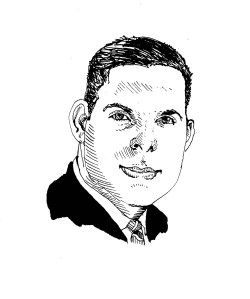Can Innovation Be Reverse Engineered? If It Can Happen on Roosevelt Island, It Should Happen in Brooklyn Too. Right?
By Sam Chandan March 21, 2012 8:30 am
reprintsMayor Michael Bloomberg has cited a dramatic transformation of the city’s economy as a primary motivator for the Applied Sciences initiative that might catapult New York to the fore of global technology hubs.
After a hard-fought contest, the initiative took a big step forward last December when the mayor announced that Cornell and Israel’s Technion would develop a new research and graduate education campus on Roosevelt Island.
 The scale of Cornell’s plan, combined with a supporting gift of $350 million from Atlantic Philanthropies, vaulted the Ivy League university’s proposal to its rightful place ahead of other contenders.
The scale of Cornell’s plan, combined with a supporting gift of $350 million from Atlantic Philanthropies, vaulted the Ivy League university’s proposal to its rightful place ahead of other contenders.
The New York City Economic Development Corporation projects that the new campus—and the innovation it will engender—will generate 400 new companies, 22,000 new jobs and $6 billion in economic activity over the next decades. Those numbers represent an extraordinary return on the city’s provision of land and $100 million direct investment. With that level of return, the marginal benefits will far exceed the marginal costs if we stop at just one. But we should have a technology campus in every neighborhood.
Stepping back from the inevitable excitement that will accompany a transformative project, do the economics support the notion that we can engineer innovation? Asked with more nuance, the question posits whether co-location of academics, entrepreneurs, established businesses and supportive government will generate positive externalities to a degree that triggers more robust long-term economic activity. We cannot engineer a specific outcome, but we might be able to foster innovation by ensuring a talented workforce, strong complementarities among firms and other cluster participants, and an infrastructure where impediments to knowledge spillovers are minimized.
Irrespective of important differences related to scale and mundane arguments related to nomenclature, academic research has been suggestive rather than conclusive in its support for innovation clusters. In part, contradictions reflect that many studies focus on discrete initiatives. Findings are often anecdotal more than empirical. Even the term itself is loosely defined, and may be used in reference to a specific technology transfer initiative as readily as it is applied to North Carolina’s Research Triangle.
While the research is still maturing, several regularities do emerge from which we can discern where and when public-private initiatives will foment innovation and reap dividends. Irrespective of scale, initiatives that start from scratch seem to fall short of expectations. A recent paper by Mariagrazia Squicciarini that uses Science Parks as the unit of analysis “uncover[s] the possible existence of first mover disadvantages, which make pioneer Parks comparatively less effective in constituting seedbeds for innovation.”
Other research suggests that the most successful initiatives build on a market’s nascent or endogenous potential, alleviating some significant constraint on knowledge spillovers, the fluid supply of human capital, and new-firm formation and initial survival. The organizational framework that can incubate and support the creative endeavor—so as to encourage a critical mass of small firms while maximizing the chances of appropriating innovative research—is the essential ingredient.
The new campus will not open until 2017, but the Technion-Cornell Innovation Institute is already taking shape. Cornell reportedly made its first payment of $10 million earlier this year. Just last month, the schools named a founding dean for the campus, as well as a vice president and a founding director for the institute.
Albeit on a smaller scale than at Roosevelt Island, Brooklyn Borough President Marty Markowitz has continued to lobby on behalf of a New York University proposal that would bring a Center for Urban Science and Progress to the former transit headquarters in downtown Brooklyn. If national economic growth in the coming decade will depend on local innovation, Mr. Markowitz’s arguments should be given a full hearing.
dsc@chandan.com
Sam Chandan, PhD, is president and chief economist of Chandan Economics and an adjunct professor at the Wharton School.


